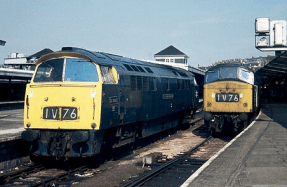
It was in January 1923 that Edinburgh’s Waverley passed into the ownership of the London & North Eastern Railway, becoming the company’s biggest station. Six months later, the London Midland & Scottish Railway took over the Princes Street terminus from the Caledonian Railway, once the latter had seen its compensation claim end in failure in front of the arbitration panel set up under the grouping legislation of 1921.
Princes Street, known locally as ‘The Caley’, had received some of the first wounded to return from the Western Front in 1914 – with their families locked outside in the street – and saw the arrival of war hero and poet Siegried Sassoon on his way to hospital at Craiglockhart three years later. It was a favourite of the Royal Family, preferred to the almost subterranean atmosphere of Waverley, and sent express trains daily to London Euston and the Lancashire cities as well as Scottish destinations ranging from Lanark to Aberdeen. Every two years it entertained a heavy traffic of specials from Wales for international rugby, flooding the city with fans in red favours and scarves in the middle of an otherwise colourless February.
Princes Street station was not the Caledonian Railway’s first terminus in Edinburgh. The first end of the line was in fact a quarter of a mile further south up Lothian Road, where the goods depot was later situated and approximately where Festival Square is now. Edinburgh was one of the twin destinations targeted by the Caledonian Railway from the first day of its inception, the railway company seen as the official route to connect Scotland to London. The buffer-stops of Princes Street station, and its predecessor Lothian Road, symbolised Edinburgh’s ‘target’ status for the speculators and the ‘terminal’ destinations for their ambitions. In contrast, the North British Railway was an indigenous, localised, initiative, its centrepiece in the city – North Bridge station, later the Waverley – occupying a site which was potentially a through station from the start – and with an additional line at right angles, heading northwards by tunnel, named Canal Street. Historian P. B. Whitehouse recorded the epithet ‘Glasgow for Glasgow, Edinburgh for Scotland’, probably because the former is a city of termini, with Central as its largest. From the start, the Caledonian planned a similar ‘terminal’ configuration for Edinburgh, with longer-distance traffic, such as Euston to Aberdeen, leaving the West Coast Main Line at Law Junction, north of Carstairs.
Launched with a formal prospectus at Westminster in 1844, the Caledonian was regarded as the Government’s choice of route for a major Anglo-Scottish main line, following the deliberations of the SmithBarlow Commission set up three years earlier. It was believed at that time that one railway between London and Scotland would suffice and this West Coast route, already building northwards courtesy of the London & North Western and Lancaster & Carlisle, would include a ‘Y’ junction in south central Scotland which would serve Edinburgh and Glasgow equally. Connections farther north were also feasible.
The only problem was that businessmen in the two major Scottish cities had their own plans for railways crossing the Border and accessing England, Scotland’s greatest market. The Government’s preferred route enjoyed its official primacy only on the understanding that work north of Carlisle would start imminently – and that did not happen. With the ‘official’ line commandeering the most obvious




